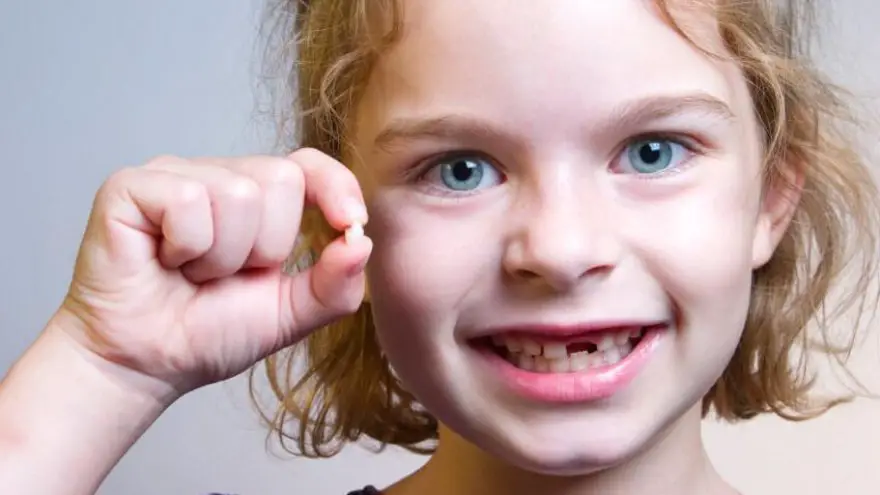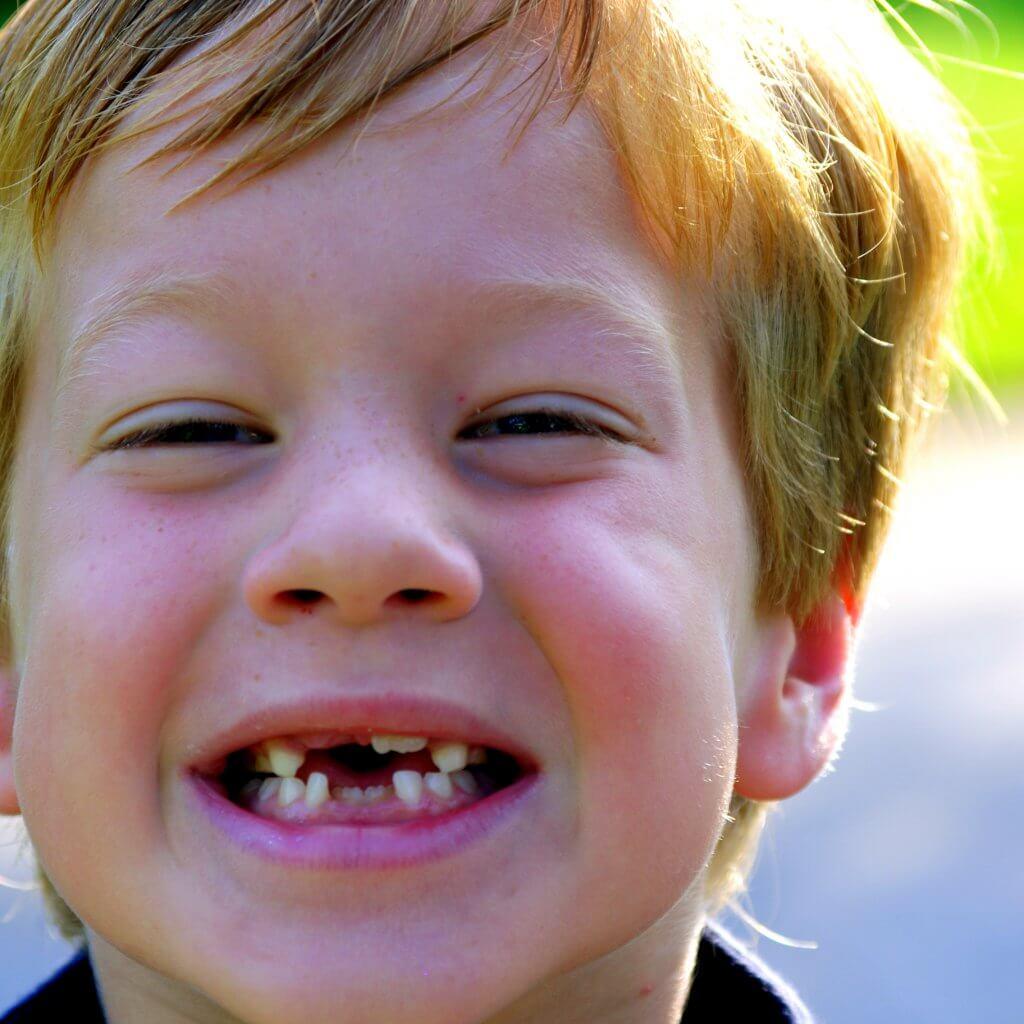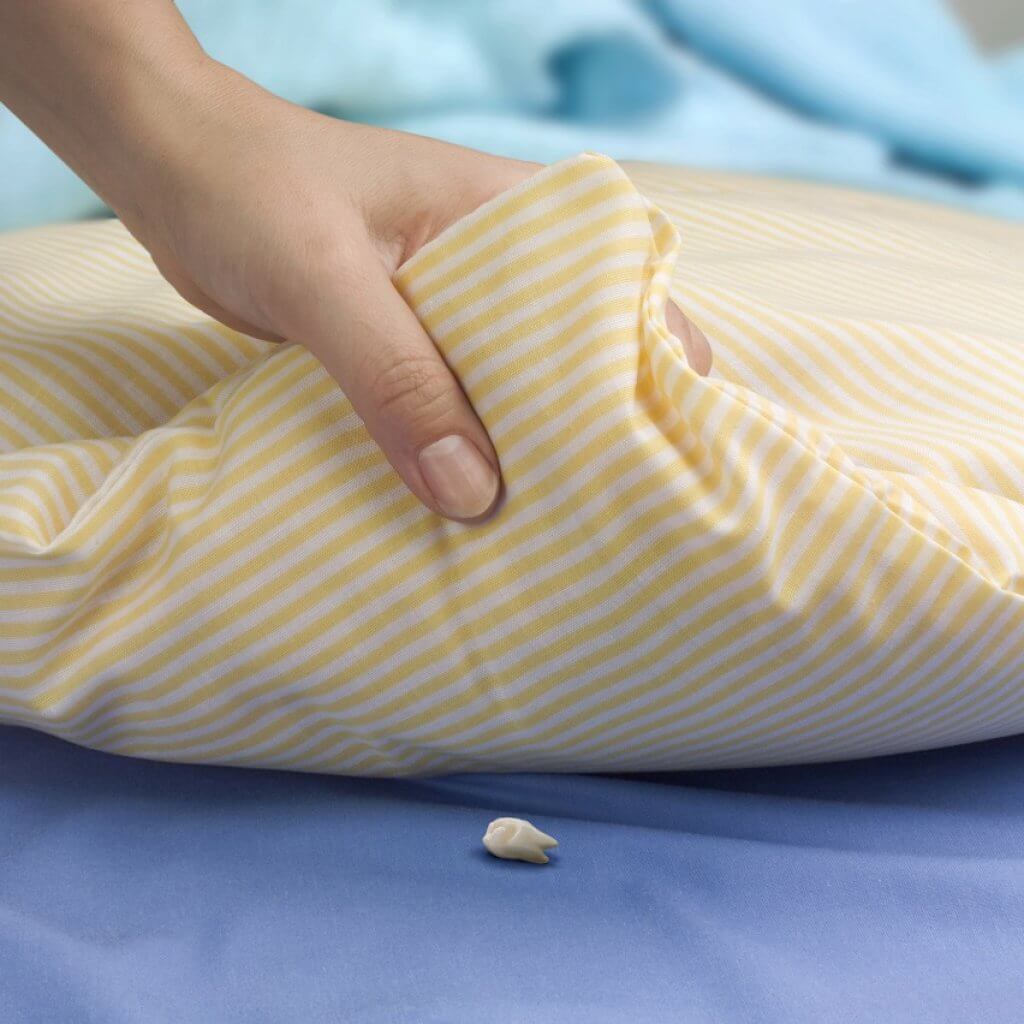The Remarkable Process of Losing Baby Teeth

Perhaps one of the most memorable milestones in a young child’s life is when they wiggle their first loose baby tooth. This moment ranks right up there with learning to ride a bike and potty training for its importance to them and also you. My oldest son, Kaden, was always incensed when he felt a loose tooth. He was apprehensive at first; worried that it was too soon, or that it meant some impending pain to come when it eventually fell out. Eventually, his fear gave way to excitement as he took it to mean that he was getting older and, in his mind at least, more mature. We’ve always done the tooth fairy thing, and so a dollar under his pillow the following morning may have caused some more aggressive wiggling than pediatric dentists would recommend. In a hidden drawer in our bedroom, we still have all of the recovered baby teeth that Kaden lost, mementos of a period of transition in his young life.

The losing of baby teeth (also called primary teeth, or milk teeth), is one of those things in life that has to happen, no matter how benign or dramatic the event turns out to be. In most cases, your baby teeth come in by the age of 3 and then as early as 4 and as late as around age 7, begin to fall out in the same order that they came in. If your child loses a baby tooth prior to age 4, it’s a good idea to see your family pediatric dentist ensure that there are no underlying dental issues. In some rare cases in the event of a premature tooth loss, your child’s dentist may decide to install a plastic spacer to keep the adjacent teeth properly aligned. This process of losing baby teeth continues until the emergence of the final molars, commonly called the wisdom teeth; usually around the ages of 17 to 21. So why do we have baby teeth in the first place and why do they fall out? Most dentists agree that our primary teeth help with the developing jaw alignment and serve as placeholders and guides for the adult teeth that will form below them. They also aid in speech development and help your child learn how to chew. As the roots of the baby teeth die and are resorbed by the permanent teeth, the empty cavity they leave behind is the path the corresponding adult tooth below will take upwards.
In most cases, you as a parent should be prepared to answer a lot of questions that your child will have when they first feel the wiggle of a loosening baby tooth. It can be helpful to reassure your child that the tooth will come out when it is ready and there will likely be no pain involved in the process. You can take proactive steps to not only help the tooth on its way out when it is ready but to also ensure good dental hygiene. Make sure your child brushes at least twice a day and uses floss. You may have to help or supervise them in this in order to reassure them that doing so will have no negative consequences. Make sure their toothbrush is replaced every couple of months so that the bristles don’t get too worn or harbor bacteria and schedule regular check-ups with their pediatric dentist.
You do want to make sure your child does not prematurely yank on the wobbly tooth as damage to the root underneath can lead to unwanted pain, bleeding, and infection. More on more on social media these days it seems you see all sorts of creative and potentially harmful methods of baby teeth extraction. From tying one end of a string to an arrow and the other to the tooth to using a remote-controlled car to pull a seemingly stubborn tooth free, the list is endless. The problem is that our baby teeth are designed to come out on their own without too much interference on our part. By letting the tooth fall out when it’s ready, the adult tooth below will have sufficient time to emerge far enough to keep the proper spacing and alignment of the surrounding teeth.
Usually occurring when we least expect it, such as during a meal or while brushing, eventually, the baby tooth will fall out. This may or may not be accompanied by some degree of bleeding. Your first step is to remain calm. If you stay in control of the situation it will help your child to remain calm as well. Explain that everything that is happening is perfectly normal. Have your child rinse their mouth with warm water to get out any blood that may be present. This is a great time to reinforce the importance of good dental hygiene. Make sure that when brushing they only gently clean the area where the tooth fell out. Avoiding foods and drinks such as soda, sugary snacks, and candy will keep their teeth clean and healthy as well. These tips will not only promote healthy oral care but also aid in the proper strength and development of their permanent teeth.

Now that your little one lost their tooth, what to do with it is a matter of personal preference for your family. A surprising number of people elect to simply toss the discarded tooth in the trash. Admittedly, the idea of holding onto ejected teeth is not for everyone. I have had some parents explain to me that they find the practice of keeping bloody baby teeth as more than a little “ghoulish”. For the health conscious people out there, emerging health scientists are encouraging parents to hang onto their children’s baby teeth due to the fact that they are an excellent source of mesenchymal stem cells. These stem cells can be used in the event your child develops certain illnesses and diseases like various cancers. Be warned, the services out there that properly store your child’s teeth are not for the financially faint of heart. Expect to pay anywhere from $1,000 to $2,000 dollars for the service with additional annual fee’s exceeding $100.00. Still, the idea that you may be able to cure a potentially fatal disease in your child is considered to be more than worth the cost.
If you want to hold onto the teeth for posterity’s sake, some companies make what is referred to as “tooth boxes”. These decorative boxes have spaces to house all 20 of your child’s baby teeth. If your goal, however, is to fill every spot, a word of caution, rarely will you be able to recover all 20 teeth. Whether ingested unknowingly during a meal or lost while playing, it’s not uncommon for your child to suddenly realize they have an empty space where a tooth once was. Handling this situation can be a bit tricky and I have spent more than a few hours on my hands and knees in the backyard looking for teeth under the supervision of an inconsolable child; the part of parenthood you don’t find in “what to expect” type books.
The most traditional route though of course is the Tooth Fairy. If you ever want to create a social media controversy, just ask on a public forum what is an ideal amount of gift money for the Tooth Fairy, (aka Mom and Dad) to leave a child. Some of the answers will likely frighten you. Our family has always used the Tooth Fairy, leaving $1.00 to our kids per tooth, with IOU credit given to the ones that we were never able to recover. If the idea of giving money to a 5-year-old for a simple bodily function is off-putting to you, have no fear. This is also a great time to reinforce good oral and dental hygiene. Your Tooth Fairy can leave behind a new toothbrush, disposable floss items, or any other dental care products that will add a little magic and excitement to their daily dental routine.

Whatever route you go, be sure to take advantage of the event. It’s a wonderful, (and bittersweet), time to share with your child one of the many transitional aspects of growing and development that they’re going to experience. As long as you approach it with informed decisions and a calm demeanor, you’ll set the tone for many other bodily changes down the road. As this period is the dawn of self-awareness for most children, where they’re able to understand the physiological changes in their bodies, you have an opportunity to help them embrace the sometimes scary experience. You may even find their curiosity growing about what other changes they can expect in the future as they continue to grow. One thing is for certain, you are both likely to remember these moments long into the future; I know I do.






